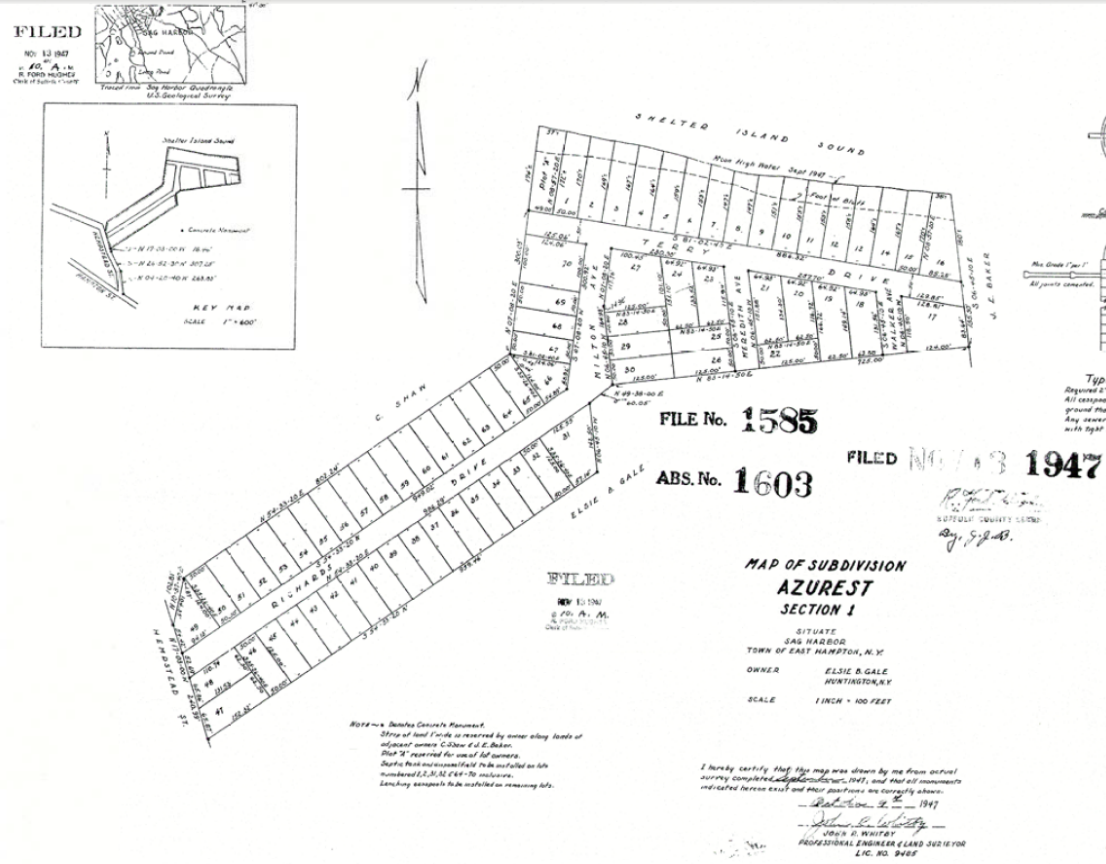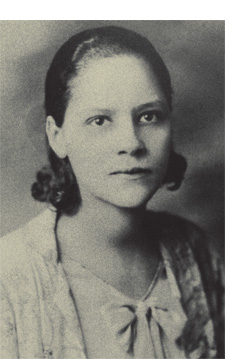Seventy years ago, two visionary African American sisters, Maude Terry and Amaza Lee Meredith, launched a project to create Sag Harbor’s Azurest subdivision in partnership with one of Long Island’s most famous realtors, Daniel Gale, and his wife, Elsie.

The Azurest subdivision was founded in the 1940s, when Maude Terry (1887–1968), a Brooklyn schoolteacher vacationing at a rented cottage in Sag Harbor’s Eastville neighborhood, envisioned a new private summer community designed for black families on what was then an undeveloped 20-acre parcel between Hampton Street and Gardiner’s Bay. Mrs. Terry reached out to the property’s owner, Elsie B. Gale, whose husband, Daniel Gale, was struggling to sell the undesirable marshy wooded land, and they agreed on a plan to subdivide the parcel in partnership.
Maude Terry played a key role by finding prospective buyers for the newly created Azurest lots and went on to co-manage the Azurest Syndicate Inc., which brokered sales and financed mortgages for the subdivision. At a time when discriminatory practices like redlining otherwise prevented people of color from financing property, the Azurest Syndicate made it possible for African Americans to obtain mortgages and fund construction. Mrs. Terry managed the Syndicate with her sister, Amaza Lee Meredith, civil engineer James P. Smith, as well as attorney Dorothy C. “Dot” Spaulding and her husband James Edwin Spaulding.

Better known for her work in Virginia, Amaza Lee Meredith (1895–1984) was an educator and artist, and one of the very first African American female architects. After earning B.A. and M.S. degrees at Columbia University between 1928 and 1934 (Maude Terry also attended Columbia University), Miss Meredith served as faculty at Virginia State University (VSU) from 1930 to 1958. She founded VSU’s Fine Arts Department and was appointed department chair in 1935. One of her most extraordinary designs is Azurest South, a modernist style-house built in 1939 on the VSU campus in Petersburg, where she lived with her partner, Edna Meade Colson.
Amaza Lee Meredith designed at least two residences in Sag Harbor’s Azurest neighborhood, including a house where she summered with her sister’s family, as well as Edendot, a house designed for the Spauldings, her friends and business partners. Documents from a substantial collection of drawings and blueprints found in the Amaza Lee Meredith Papers at VSU’s Johnston Memorial Library suggest she may have designed plans for a number of other houses in Sag Harbor.

Miss Meredith additionally served as secretary and archivist for the Azurest Syndicate. Just ten years after the founding of Azurest, she suspected the subdivision’s legacy would be significant: “Do you think that minutes should be kept of each meeting?”, Amaza asked in a 1958 letter, “In this way a complete history of the Syndicate will be recorded. I have the feeling that the organization is making history and none of it should be lost. (I fear some already is lost)”. Letter by Meredith as quoted by Grace Lynis Dubinson, “Slowly, Surely, One Plat, One Binder at a Time: Choking Out Jim Crow and the Development of the Azurest Syndicate Incorporated,” (M.A. Thesis, Georgia State University, 2012), 7-8.
There is still much more to learn about the development of Azurest, a community founded by two remarkable black women entrepreneurs who, like many early residents, came of age during the height of the Harlem Renaissance and helped launch the Civil Rights Movement. Other than Edendot and her summer house, we do not yet know how many houses Amaza Lee Meredith designed or how many remain standing, but as one of the first black women to practice architecture professionally in America, her designs are incredibly significant. Any surviving examples would be worthy candidates for preservation.
By Andrea Hart and Sarah Kautz, Preservation Long Island.


